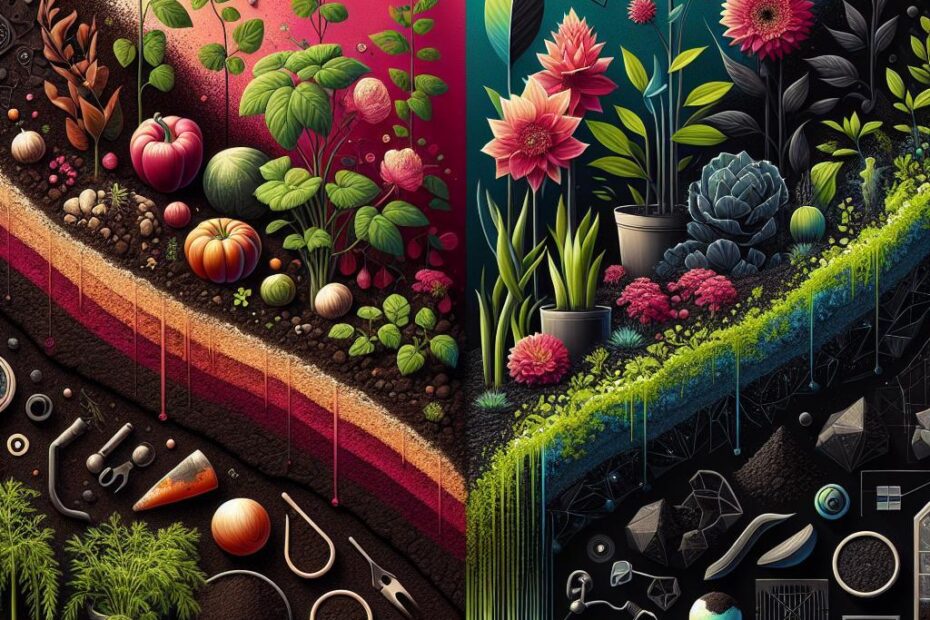Raised Bed Soil vs Potting Mix: Which Is Best for Your Garden?
When it comes to gardening, the type of soil you choose can make a big difference in the success of your plants. Two popular options for gardeners are raised bed soil and potting mix. Both have their own unique qualities and benefits, but how do you know which one is best for your garden? In this comprehensive guide, we will explore the differences between raised bed soil and potting mix, the benefits of each, and provide practical tips for choosing the right option for your gardening needs.
Introduction to Raised Bed Soil and Potting Mix
Raised bed soil and potting mix are both soil options that are specifically designed for growing plants. They are typically used in containers, raised beds, or other gardening applications where traditional in-ground soil may not be suitable. While they may seem similar at first glance, there are key differences between the two.
Raised Bed Soil:
- Raised bed soil is a specially formulated blend of topsoil, compost, and other organic materials.
- It is designed to provide a nutrient-rich environment for plants to thrive in raised bed gardens.
- Raised bed soil is typically heavier and denser than potting mix, making it ideal for use in larger containers or raised beds.
Potting Mix:
- Potting mix is a lightweight and well-draining soilless blend that is specifically formulated for container gardening.
- It is typically composed of materials such as peat moss, perlite, and vermiculite, which help to provide aeration and drainage for plant roots.
- Potting mix is easy to work with and is a great option for small containers or indoor plants.
Benefits of Raised Bed Soil and Potting Mix
Both raised bed soil and potting mix have their own unique benefits that make them ideal for different gardening situations. Here are some of the key benefits of each:
Benefits of Raised Bed Soil:
- Nutrient-Rich: Raised bed soil is often enriched with organic matter, which provides essential nutrients for plant growth.
- Improved Drainage: The heavier texture of raised bed soil helps to improve drainage in raised bed gardens, preventing waterlogged soil.
- Longevity: Raised bed soil is designed to last for multiple growing seasons without needing to be replaced.
Benefits of Potting Mix:
- Lightweight: Potting mix is much lighter than raised bed soil, making it easy to transport and work with in small containers.
- Aeration: The soilless blend of potting mix provides excellent aeration for plant roots, promoting healthy growth.
- Convenience: Potting mix is easy to find at most garden centers and can be used straight out of the bag without any additional amendments.
Practical Tips for Choosing the Right Soil for Your Garden
When deciding between raised bed soil and potting mix for your garden, there are several factors to consider that can help you make the best choice:
- Container Size: Consider the size of your containers or raised beds when choosing soil. Raised bed soil is best for larger containers, while potting mix is ideal for smaller containers.
- Plant Needs: Take into account the specific needs of the plants you are growing. Some plants may require the extra nutrients found in raised bed soil, while others may thrive in the well-draining qualities of potting mix.
- Watering Frequency: Think about how often you will need to water your plants. Raised bed soil retains moisture better than potting mix, so it may be a better option for plants that require consistent moisture.
Case Studies and Firsthand Experiences
To provide a real-world perspective on the differences between raised bed soil and potting mix, let’s take a look at two case studies:
Case Study 1: Vegetable Garden
- Raised Bed Soil: A gardener decides to use raised bed soil for their vegetable garden. They find that the soil provides excellent drainage and nutrient levels, resulting in healthy and abundant vegetable crops.
- Potting Mix: Another gardener opts for potting mix in their container vegetable garden. They appreciate the lightweight nature of the mix and find that their plants thrive in the well-draining environment.
Case Study 2: Indoor Plants
- Raised Bed Soil: An indoor gardener chooses to use raised bed soil for their potted plants. They notice that the soil retains moisture well, reducing the need for frequent watering.
- Potting Mix: Another indoor gardener uses potting mix for their houseplants. They appreciate the ease of working with the lightweight mix and find that their plants grow well in the aerated environment.
Conclusion
In conclusion, both raised bed soil and potting mix have their own unique qualities and benefits that make them ideal for different gardening situations. When choosing between the two, consider factors such as container size, plant needs, and watering frequency to determine the best option for your garden. By understanding the differences between raised bed soil and potting mix, you can make an informed decision that will help your plants thrive and flourish. Happy gardening!
